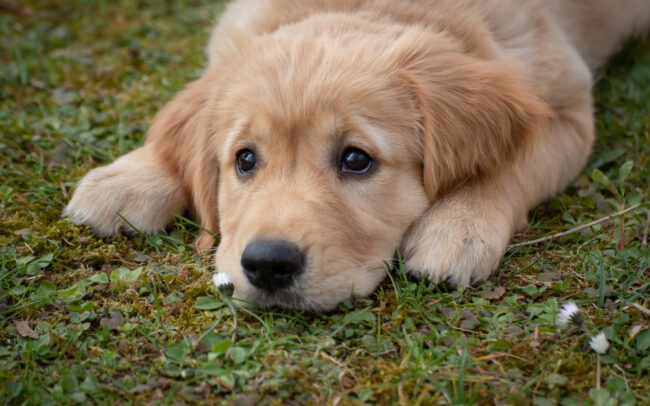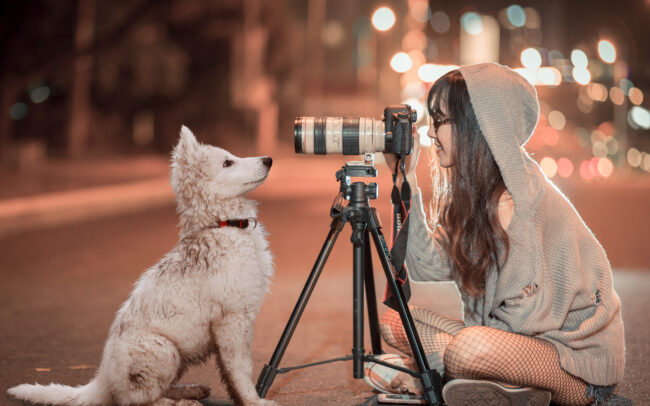Table of Contents
Do you remember scolding your dogs for chewing on something that’s not a toy? And does your heart melt when they look at you with adorable little puppy eyes?
Well, we can relate to that! Disciplining your dogs can be super hard. But it’s super important too. Discipline is most necessary when dogs start fighting with each other. Don’t we all want our little four-legged friends to get along? However, there’s a right and wrong way to discipline your furry friend.
Here’s a paws-on guide to disciplining your dogs and breaking up furry fights.
How to Discipline a Dog After Fighting
As a master, your instinct is to punish your pooches for fighting. But remember, the key is to ‘discipline’ not to ‘punish.’
Before you learn how to discipline a dog after fighting, understand their reasons for it. A lot of times, dogs don’t fight to cause harm. All they want is to establish dominance. Your dogs may fight for control over food, toys, or even your attention.
In fact, dogs might want to take up the role of pack leader. As their owner, your job is to establish dominance over them, and disciplining them is the best way to establish this order.
How Can You Instill Discipline After a Fight Has Happened?
Here’s what you want to teach your dogs: you’re the only one who will ever win fights. So what do you do for your fur babies to understand this?
Well, you establish order and set a routine. The best way to teach your dogs obedience is with a consistent timetable. And make sure you give out resources equally.
Say you notice your dogs always fight around mealtimes. What do you do? You set the same time for feeding them every day. But you do so in separate rooms.
What if they’re fighting for attention from you? Spend the same time with your companions, but do this together. Or else, it may lead to jealousy that causes more fights.
So how can you instil discipline after a fight has happened? Well, try to prevent fighting in the first place. Once you establish a routine, shift your focus to setting high-value times.
For instance, try not to leave toys lying around for your dogs to fight over. Instead, set specific playtimes and playtoys. When time’s up, take the toys away.
How to Tell if a Dog Fight is Serious
It’s not easy to know if your fluffy mates are fighting or actually fighting. And it’s no wonder why. Play fighting involves many actions that seem aggressive: biting, growling, wrestling, and more.
It’s pretty confusing because you see all these actions in serious fights too. You overlook the scene as one question after another pops into your head.
Is the fight serious? Do you need to intervene? What if it is a serious fight and you break it up too late? The list is endless.
But there are ways to know whether your pooches are going at it or having a friendly tussle. Let’s look at some pointers on how to tell if a dog fight is serious.
Behaviours that indicate that it is a serious fight
What are the behaviours that indicate that it is a serious fight?
- Do you see your dogs’ hackles rising? Their bodies go hard and stiff, and the hair on their upper back stands on end.
- They close their mouths, curl their lips and let out warning growls.
- The dogs will pin their ears back flat.
- No bouncy movements and turns. What you’ll see are quick and efficient moves.
- Is one of your dogs trying to escape from the other? If they tuck their tails between their legs, they’re indicating submission.
- Your pups will keep coming back to mess around in a friendly fight. But if one of them leaves and doesn’t return, you know it was serious.
Behaviours that indicate that it is not a serious fight
Are there behaviours that indicate that it is not a serious fight?
- Are your poochies play-bowing? That’s when they lower the front end of their body but lift the back end in the air.
- Huge, toothy grins.
- Are they bouncing around happily? Your dogs will have a spring in their step around each other.
- Longer and more exaggerated growls. It’s surprising, but play growls can sound worse than serious ones.
- They’ll take turns acting vulnerable and chasing each other around. You have no reason to worry if they drop to the floor and expose their underbellies.
- They keep going back for more. They just want to enjoy playtime!
What Not to Do After a Dog Fight
Watching your furry family fight can leave you pretty shaken up. It’s downright terrifying to witness. And then you have to deal with the aftermath.
What do you do? Well, for one, try to control your emotions. It won’t be long before your dogs are best friends again, so there’s no reason to stress!
So what not to do after a dog fight? The answer is one word: worry. If you continue to worry, there’ll be more chances of a repeat.
Keeping calm is the antidote for the present and the future. Let’s keep up the positivity instead and focus on what you should do after a fight.
- Your furry pals often mimic your emotions. So especially after a fight, you want them to feel your calmness and positivity. Once you separate them, take a deep breath, and try to relax.
- Do either or both dogs have any injuries? Make a thorough examination for injuries. And don’t forget to check their mouths.
- If you notice any bleeding, try to stop it by placing a clean cloth over the injury. But leave any actual treatment to a professional vet.
- Keep the dogs in separate, secure areas.
- Don’t take any serious injuries lightly. Speak to your vet immediately because dog fight wounds can be very harmful.
- Your dogs are just like you! They, too, need time to calm down after getting into a serious fight. So keep them separated for at least 48 hours.
- Walk, feed, and play with your little companions separately during these 48 hours.
Now we come to a dog owner’s worst nightmare: reintroducing dogs after a fight. Like there’s a plan of action for handling dogs after a fight, there’s also one for reintroducing them.
Reintroducing Dogs After a Fight
Reintroducing dogs after a fight can be pretty stressful. Even more so if they live in the same house.
But there’s one steady rule throughout the process: keep calm. So what do you do to make reintroduction as easy as possible? Take a look at some of these tips:
- Put collars and leashes on both dogs and bring them to a neutral location. You’ll want a helper on hand to handle one of the dogs.
- Now you take them on one of their favourite activities: a walk! You and the helper should walk the dogs at a distance of about 10-15 paces.
- Slowly try to close the distance as you walk. If either dog reacts negatively, increase the space.
- Repeat this until your dogs are finally walking side-by-side. Then signal the helper to fall back and widen the gap. When you’re about 30 steps ahead, go back to the helper and the other dog. But walk straight past them without allowing any interaction.
- Repeat that about 3-4 times. Once the dogs comfortably pass each other without reacting, let them interact. Keep doing this for a while, and if neither dog shows aggression, you’re good to go!
- Head on home and once you reach, let the dogs associate more. But keep them under watch and on a leash. This way, you’re on hand to break up any sudden fights.
- If you don’t fully trust your dogs, don’t let them interact without supervision. Keep them in separate spaces if you’re not around to stand guard.
Can Dogs Live Together After Fighting?
So you’ve broken up the fight and separated your dogs. But now you’re wondering, can dogs live together after a fight?
Well, you can put this worry to the back of your mind. Because in most cases, the answer is yes! There are always tricks to getting your furry friends to stay friends.
Nothing more than a rigid timetable for meals and affection. And it’s a great way to teach your pooches that they get equal amounts of food, attention, toys, and more.
A ‘Woof’ to the Wise
Dogs are a lot more like their human masters than we realize. They love like you, play like you and fight like you.
So a bit of fighting among your furry pals is nothing to worry about as long as you deal with it correctly.


